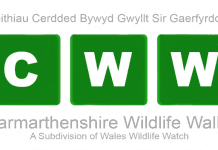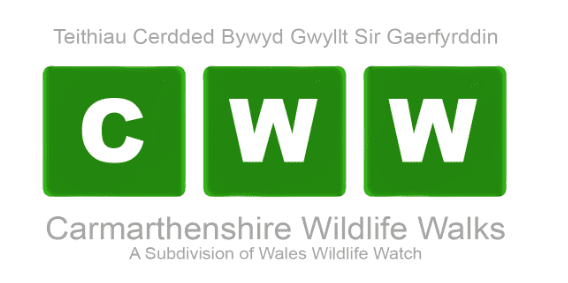Fire fighters have teamed up with a Carmarthenshire County Council conservation project to protect countryside areas from arson attacks.
Mid and West Wales Fire’s Arson Reduction Team is working with the Carmarthenshire Bogs Project established to help restore important wetland habitats.
The Council secured funding from Natural Resources Wales’ Resilient Ecosystems Fund (REF) and the work focuses on commons in central Carmarthenshire. The area, near Brechfa, has been identified nationally as a priority area for the rare raised bog habitat in Wales.
Station Officer Steve Richards of the Arson Reduction Team said: “By involving all the local communities, and speaking to farmers, landowners and land managers, we want to educate people on the impact of non-controlled deliberate fire starting.
“We are obviously aware that landowners do need in some circumstances to manage the land and that controlled burning is a part of managing the land.”
He said that the team was working to educate everyone to adhere to the code of conduct regarding controlled burning.
“We are working in conjunction with the company Commons Vision to produce a training course for landowners, land managers and other interested parties in how to conduct controlled burns so that they are safe and do not damage the landscape,” he added.
The ecology of bog habitats:
Wet bog habitats are one of the most important natural resources and provide us with fresh water by filtering out pollution.
They act as sponges, reducing flood risk through the storage of rainwater, which is then slowly released into surrounding watercourses. They also help buffer the extremes associated with climate change by storing carbon within the peat.
Carmarthenshire’s biodiversity officer, Isabel Macho said: “In Carmarthenshire wetlands habitats have been lost or damaged though draining and burning of the commons.
“Bogs act like big sponges storing water and carbon, helping with flood prevention and climate regulation – ironically by keeping these sites wet we’ll help to keep our feet dry.”
Many native wildlife species depend on bogs including wetland plants such as cranberry and rare sphagnum mosses, and are habitats used by declining bird species such as curlews and golden plovers.
It is proposed that the project will find out as much about these sites as possible and enable long-term management that will restore resilient, robust bog habitats.
Help keep news FREE for our readers
Supporting your local community newspaper/online news outlet is crucial now more than ever. If you believe in independent journalism, then consider making a valuable contribution by making a one-time or monthly donation. We operate in rural areas where providing unbiased news can be challenging. Read More About Supporting The West Wales Chronicle





















